The nene is a goose species native to the Hawaiian Islands of Oahu, Maui, Hawai’i, Kaua’i, and Moloka’i. They are also known as the “Hawaiian goose.”
These birds are the rarest species of goose in the world, and were once pushed to the brink of extinction. Today, they are a success story, and various protections have helped the population rise to more sustainable levels. Read on to learn about the nene.
Description of the Nene
These geese are medium in size, standing at approximately 16 inches tall, and weighing up to 7 pounds at the most. Males are larger than females, but not by a huge margin. On average, males weigh 11% more than females do. They are buff colored, with black or dark brown heads, and wings. They have a striped/lined pattern from their neck down.
Interesting Facts About the Nene
These birds are a wonderful success story, but they are not out of the woods yet! Learn more about why these unique creatures deserve our continued protection.
- Say It, Don’t Spray It – Chances are, you’re pronouncing it wrong, unless you’re from Hawaii! The name of these birds is pronounced nay-nay.
- Grounded – Though they can fly, these birds, like most waterfowl, build their nests on the ground. This obviously makes it easier for predators to attack the eggs, young, and nesting adults. Because of this, the birds must be extra vigilant, and very selective in their nesting locations.
- Precocial – Baby nene, called “goslings,” are precocial. This means that they rely on their mothers, but they feed themselves and have feathers. Some birds are born altricial, which means they are naked and fully dependent on their parents feeding them.
- Beloved Bird – This goose is the state bird of Hawaii.
Habitat of the Nene
Hawaiian geese inhabit a wide range of habitats, both natural and human-made. They can be found in grasslands, shrublands, lava plains, and coastal dunes. These birds also take advantage of farmland and pastures, as well as gold courses.
Distribution of the Nene
Unfortunately, this bird started with a small range, and is restricted to an even smaller one now. Today they are found on the islands of Oahu, Maui, Hawai’i, Kaua’i, and Moloka’i. Before their populations were decimated, they were also found on Kaho’olawe and Lana’i.
Diet of the Nene
Like many other species of geese, these birds are herbivores. They will both graze on grasses, and browse on shrubbery and other plants. Feeding behavior depends on food availability. In general, their most common food items include grasses, leaves, seeds, shrubs, flowers, and fruits.
Nene and Human Interaction
Humans blatantly decimated the populations of this goose upon arrival to the Hawaiian Islands. Prior to colonization, there were approximately 25,000 individuals in the population. Once the islands became inhabited, hunting of these birds (and a number of other species) began.
The arrival of ships also brought invasive species, which also targeted these birds. Feral cats, pigs, and Asian mongoose, all hunted and killed these geese. By 1952, there were just 30 nene remaining. Captive breeding in zoos was widely successful, and the birds were able to be reintroduced to the islands. Today, the population is approximately 2,500 birds.
Domestication
These geese have not been domesticated in any way.
Does the Nene Make a Good Pet
Nene are still threatened with extinction, and it is illegal to own one as a pet.
Nene Care
In zoos, these birds are quite easy to care for. They breed very well, making captive breeding and reintroduction programs a breeze. Diets formulated for domesticated geese work well, and their diet can be supplemented with fresh greens as well. Keeping a stable breeding population in zoos is extremely important for the health and long-term protection of the species.
Behavior of the Nene
Like other waterfowl, these geese are quite social. They will live in small groups outside of the breeding season, and remain as a family unit when their young are still dependent on them. They forage for food during the day, and are mostly terrestrial birds. Despite the fact that they spend most of their time on the ground, they are still capable of flight, and will migrate to their favorite island for breeding purposes.
Reproduction of the Nene
Breeding season for these birds ranges from August through April, the longest of any goose. Unlike most other species of ducks and geese, nene mate on land. After mating, females build their nests and lay eggs from November to January.
Between three and four eggs are laid on average, and they are incubated for approximately one month. The young goslings will remain with their parents until the next breeding season arrives.


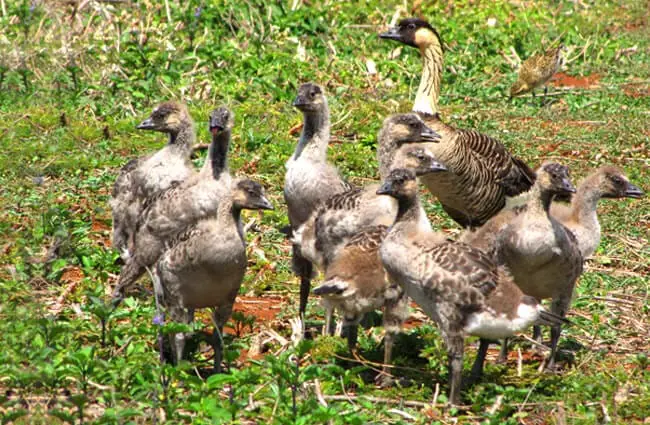
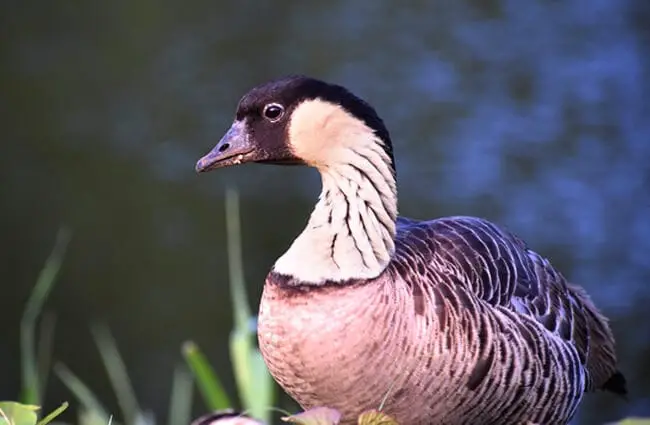

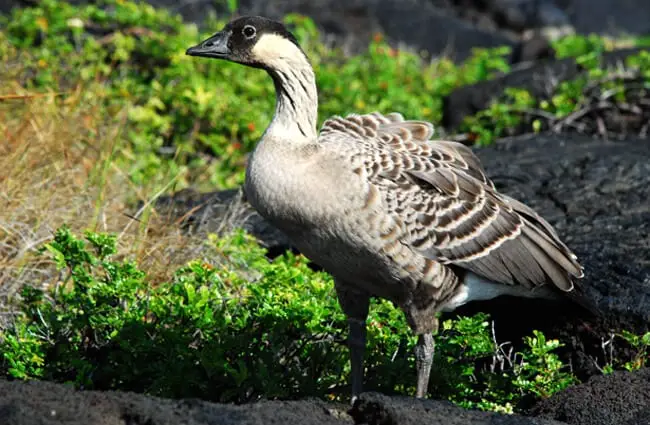

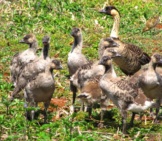

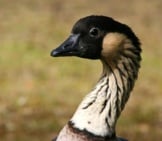

![Red Angus Closeup of a beautiful Red Angus cowPhoto by: U.S. Department of Agriculture [pubic domain]https://creativecommons.org/licenses/by/2.0/](https://animals.net/wp-content/uploads/2020/03/Red-Angus-4-238x178.jpg)












![Red Angus Closeup of a beautiful Red Angus cowPhoto by: U.S. Department of Agriculture [pubic domain]https://creativecommons.org/licenses/by/2.0/](https://animals.net/wp-content/uploads/2020/03/Red-Angus-4-100x75.jpg)

